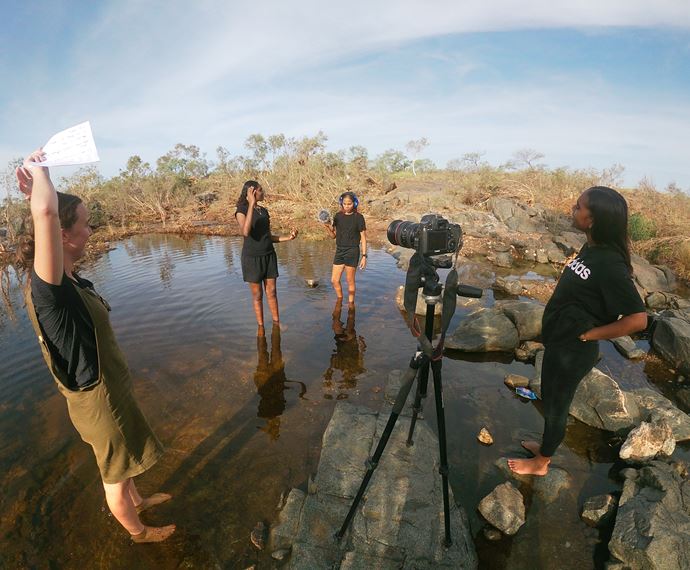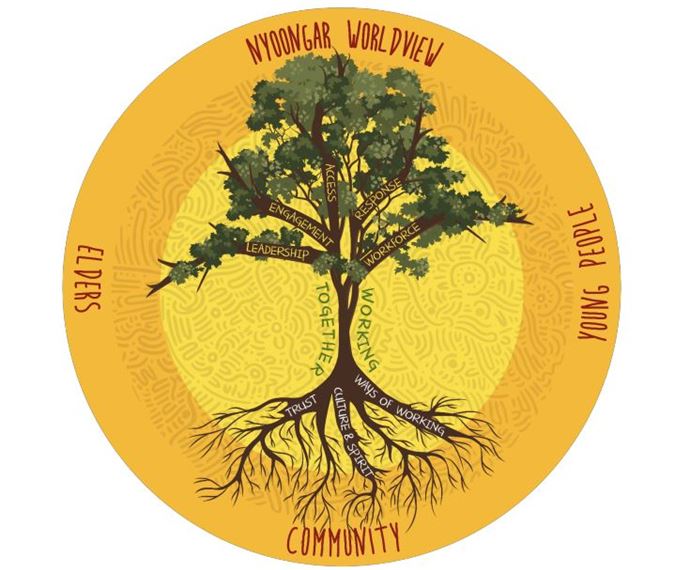New college facilities provide opportunities for cultural development
The Dandjoo Darbalung program, run through St Catherine’s College, provides Indigenous students from remote and regional communities with accommodation while they pursue a tertiary education. Joint funding from Lotterywest and Department of Communities supported the construction of the Dandjoo Darbalung facility, which includes uniquely designed student accommodation and a cultural centre at St Catherine's College, doubling its capacity to 100 residents. The Cultural Centre is open to the public and currently attracts approximately 1,000 visitors each year.
To provide housing for Aboriginal students relocating from remote and regional communities to engage in tertiary education and employment opportunities.
St. Catherine's College
12/26/2019
$15,207,284
Lotterywest
$225,557
Perth and Metro Area
Aboriginal and Torres Strait Islander people
- Development and implementation of facilities, program and resources to support Indigenous students from regional and remote WA to pursue studies at Perth universities.
- Creation of work opportunities through schools internships and paid employment with corporate partners.
- Increased access for students to attend events, activities, speaking engagements through the purchase of a bus.
- By creating a bespoke Cultural Centre where people can meet and connect, St Catherine’s was able to create a safe environment to gather.
- Collaborating from the project outset and building trust with Indigenous and non-Indigenous young people was key.
- Profiling of the Dandjoo Darbalung program since the launch of the new spaces has led to a significant increase in external engagement and this has meant that the impact of the building has far exceeded initial intent and expectations.
![Picture4[1]](/media/yakfyy03/picture4-1.jpg?anchor=center&mode=crop&width=1468&height=577&rnd=133051352411170000&quality=80)
Opportunity
Participation in higher education has an important role in reducing disadvantage experienced by Indigenous Australians through improving employment, economic and health outcomes [1]. In 2016, 42 per cent of Indigenous Australians aged between 25 and 34 years of age had a tertiary qualification, compared to 72 per cent of non-Indigenous Australians [2]. In 2020, the National Agreement on Closing the Gap introduced a target to increase that to 70 per cent by 2031.
Within the university environment, perceptions of cultural insensitivity, lack of cultural awareness and respect and limited engagement with the local Indigenous community have all been reported as significant barriers to ongoing retention [3].
Elements which support the ongoing success of Indigenous students in universities includes the provision of tangible resources for students and access to venues for social, cultural and community activities [3]. Furthermore, inclusive environments that involve members of the local Indigenous community were found to be important elements for ongoing participation and retention [3].
Dandjoo Darbalung is a program that has been offered to Indigenous university students at St Catherine’s College in Perth since 2012. It provides holistic services to support Aboriginal students with their tertiary studies while attending one of the five Perth universities, or other tertiary providers, whilst encouraging and nurturing their cultural identity. With the success of the program came the need for a dedicated building that embraced Indigenous design, colours and connection to the land and supported learning and opportunities for cultural development.
Approach
To build capacity and meet increased demand for the Dandjoo Darbalung program, St Catherine’s secured $12.8 million from the Department of Communities, under the Commonwealth National Partnership on Remote Housing (NPRH). This provided housing for Aboriginal students relocating from remote and regional communities to engage in tertiary education and employment opportunities. St Catherine’s contributed $1,250,000 towards the project and Lotterywest contributed $225,557.
Funding supported a custom-designed building comprising 54 new rooms and integrated living and learning facilities. Its architecture references Indigenous principles and emphasises connection to land and country. Designed with Aboriginal students’ involvement, amenities include a Cultural Centre, exhibition and performance area, large Banksia-shaped yarning circle, fire pit and quiet areas for storytelling and sharing knowledge.
Lotterywest supported components of the Cultural Centre designed to support the exchange of cultural knowledge between senior Indigenous mentors, families and communities with the general public in an outdoor setting. This included the creation of a carefully landscaped Indigenous garden around the Cultural Centre that reflects the six seasons and offers a visible and accessible teaching space.
The grant included a vehicle to support the program, allowing students to access counselling, community activities, healing circles and Lore time, airport trips, events, funerals, and other activities. It is also used to transport students to cultural awareness events and mentoring at schools.
Impacts and outcomes
With the completion of the building, St Catherine’s became home to the largest tertiary residential program of its type in Australia. The facilities, program, and resources support Indigenous students from regional and remote WA to pursue studies at Perth's five universities which may lead to future opportunities that come with having a tertiary education.
The program is highly effective in supporting ongoing participation in tertiary studies with an 87% retention rate and 75% pass rate for its Aboriginal residents. It has also created opportunities for work with students going into schools, successfully gaining internships and paid employment with Lotterywest and other corporate partners.
Improved facilities and surrounds have resulted in doubling the number of resident students in the program and an increased retention and successful completion rate. An additional benefit has been the ability for St Catherine’s to promote its cultural immersion programs and increase its engagement with corporations, schools, and the broader community.
The opportunity to purchase a 12-seater vehicle, allowing students in the Dandjoo Darbalung program to travel as a group to events, activities, and speaking engagements, further enhanced the teamwork of each group and reduced the risks involved in staff driving their own vehicles.
Dandjoo Darbalung continues to be a beacon of hope and a tangible pathway to academic and cultural success that enables a positive opportunity for meaningful employment.
![Picture5[1]](/media/mdtise3e/picture5-1.jpg?anchor=center&mode=crop&width=1468&height=577&rnd=133051352458370000&quality=80)
![Picture6[1]](/media/ozqfxnxy/picture6-1.jpg?anchor=center&mode=crop&width=705&height=705&rnd=133051352514000000&quality=80)
![Picture3[1]](/media/od1f1x0x/picture3-1.jpg?anchor=center&mode=crop&width=705&height=705&rnd=133051352360400000&quality=80)
What worked
By creating a bespoke Cultural Centre where people can meet and connect, St Catherine’s was able to create a safe environment to gather.
Collaborating from the project outset and building trust with Indigenous and non-Indigenous young people was key. Profiling of the Dandjoo Darbalung program since the launch of the new spaces has led to a significant increase in external engagement and this has meant that the impact of the building has far exceeded initial intent and expectations.
REFERENCES
- Behrendt, L., et al., Review of higher education access and outcomes for Aboriginal and Torres Strait Islander people. 2012: Department of Industry, Innovation, Science, Research and Tertiary Education.
- Anderson, I. For the first time, Closing the Gap has a higher education target – here’s how to achieve it. 2020 20/12/2021]; Available from: https://theconversation.com/for-the-first-time-closing-the-gap-has-a-higher-education-target-heres-how-to-achieve-it-147984.
- Gore, J., et al., The participation of Australian Indigenous students in higher education: a scoping review of empirical research, 2000–2016. The Australian Educational Researcher, 2017. 44(3): p. 323-355.
Learn about wellbeing
Understand how your community is going to help you to better target and plan your project.
Ready to plan your project?
Understand your vision, plan your impact and report on the outcomes of your project with three easy interactive tools in the Community Impact Planner.
Acknowledgement of Country
The Western Australian Community Impact Hub acknowledges and pays respect to the Traditional Owners of the land on which we are based, the Whadjuk people of the Noongar Nation and extends that respect to all the Traditional Owners and Elders of this country. We recognise the significant importance of their cultural heritage, values and beliefs and how these contribute to the positive health and wellbeing of the whole community.


